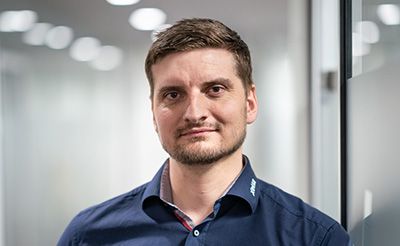Legal obligations ensure successful dissemination of BIM
In Denmark, working with BIM is more widespread than in many other European countries: by law, all publicly funded buildings have had to be available as an intelligent 3D model at the start of the project for 15 years. Schools and universities therefore train in the latest tools, and architects and engineers use the most modern tools for their planning. The Danish government's decision was partly for pragmatic reasons, says Jensen: "The earlier in the building design process undetected mistakes happen, the more expensive it becomes for the state as the client. And if you can view the whole building in 3D before construction, and thus all the individual parts in relation to each other, errors are more likely to be noticed."
Even for privately financed projects, most Danish architectural firms now work with a BIM approach: "Normally, we project participants get both - a comprehensive BIM model in 3D and many 2D drawings in PDF format - and can decide for ourselves what we continue to work with." When Jensen joined the company almost ten years ago, he was still learning about the tedious work with 2D drawings. He recalls, "Back then, it took us weeks to do the calculations." Today, with the 3D model, it's easy for Jensen to provide his client with an accurate quote on all Xella materials within hours. But by no means all construction companies are so digitally positioned.
The big leap from 2D to 3D
Xella Danmark's BIM expertise in tender processes gives it a decisive time advantage over competitors working with conventional methods - because those still exist despite the law: "The government stipulates that the BIM model must be provided by the architectural firm at the beginning of the project and the builder is responsible for ensuring that it is used in the project. But many stakeholders like us suppliers are free to choose, some of whom have not yet made the switch. The leap from 2D to 3D is a long one, but it's worth it."
Communicating better with the help of BIM
For Jensen and his colleagues, digital design brings another advantage: "For us, communication about the model plays a big role. It must be able to provide us with information quickly and efficiently, for example, about the different material quantities."
In the meantime, Xella Danmark has begun developing their own program that combines all the special requirements of BIM: it should be able to simultaneously open third-party BIM files and convert 2D drawings into BIM models - because not every project is delivered in 3D. At the same time, it is to provide access for all project participants via a cloud function. "We are on a good path in terms of BIM, but a lot still needs to happen," says Jensen, explaining the ambitious goals. Jensen also believes that the European legal situation could take an example from Denmark: "I very much hope that other countries or even the European Union will further establish BIM in law. Sustainability directives do the trick - and just like them, BIM should move from being a request to a requirement."
Industry-wide BIM standards would be helpful
Although BIM is more prevalent in Scandinavian construction projects than almost anywhere else in Europe, Rasmus Jensen also encounters challenges that make his job more difficult: " At least for privately financed projects, the architects doing the design cannot take responsibility for any errors that result from their models for our material calculations. We are currently working on a method to better detect them, and so far we always perform a risk assessment based on the quality of the model."
An implementation of industry-wide standards for working with BIM would also help Jensen in his day-to-day work, "The law stipulates that a structure must be in place of the model, but not what exactly it looks like. There are no regulations yet for much of the structure, for example for naming materials in the 3D model - one architect names autoclaved aerated concrete with an abbreviation, while another might call it lightweight concrete. Regulating that would make the work even easier for us."
